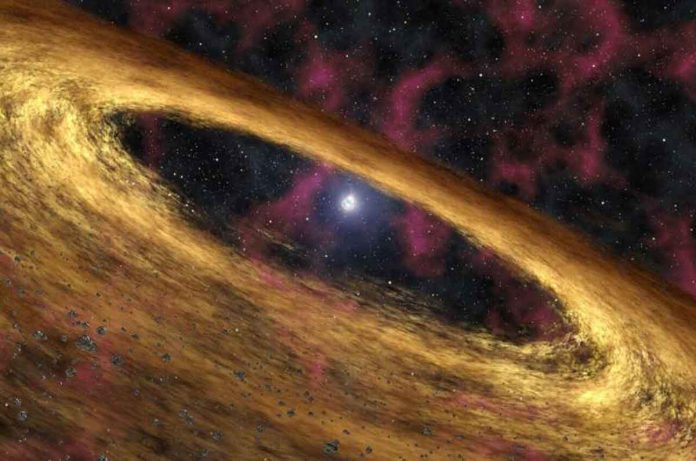Ph.D. candidate GUO Yunlang and Prof. WANG Bo of the Chinese Academy of Sciences’ Yunnan Observatories investigated the formation of black widow pulsars using ultracompact X-ray binaries (UCXBs) with He star companions.
This paper was published in the Royal Astronomical Society‘s Monthly Notices.
Millisecond pulsars (MSPs) are radio pulsars that have spin periods of less than 30 milliseconds. The orbital periods of the eclipsing MSPs range from about 0.1 to 1.0 days, and their companion stars are stripped of material by the pulsar’s pulsing radiation, as if they were spiders cannibalising their companions. As a result, scientists have given these eclipsing MSPs the names black widows (BWs) and redbacks (RBs) (RBs).
BWs have companions with masses less than 0.05 M (the Sun’s mass), whereas RBs have companions with masses ranging from 0.1 to 1.0 M. It has been proposed that BWs are the evolutionary link between accreting X-ray pulsars and isolated MSPs, with the companion being ablated by the -ray and energetic particles emitted by MSPs.
According to recent observations, BWs can be divided into two sub-types: those with companion mass (M2) in the range of 0.01-0.05 M, and those with M2 0.01 M. Pulsar radiation evaporating normal stars explains the first subtype. However, the origin of the second sub-type is unknown.
The researchers investigated the origin of BWs with M2 0.01 M by considering the evaporation process based on the UCXB channel in this study.
They calculated the long-term evolution of NS+He star systems by taking various He star masses and evaporation efficiencies into account. When the evaporation process begins, the evaporation efficiencies will affect the evolutionary track of the binary system. The He star mass will decrease faster and the binary orbits will widen faster as evaporation efficiencies increase due to more efficient evaporation.
They discovered that the M2 0.01 M BWs can be explained by the UCXB channel with He star companions. They considered different input parameters for initial models to further reproduce the properties of BWs.By using appropriate evaporation efficiencies and initial NS spin periods, the BW properties can be accurately reproduced.
Furthermore, they discovered that the mass of He star companions can be reduced to 0.001 M or even 10-5 M within the Hubble time. Previous research suggested that the He degenerate companion would be subjected to tidal disruption before the companion mass dropped to 0.004 M. As a result, BWs passing through the UCXB channel with He star companions are possible progenitors of isolated MSPs. Furthermore, they discovered that the number of isolated MSPs passing through this channel is in the range of 10-80.
This paper explains how BWs with M2 0.01 M form and proposes an alternative formation channel for producing isolated MSPs.

